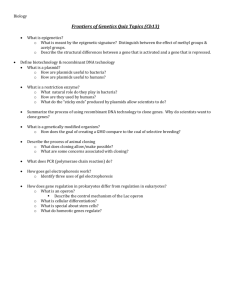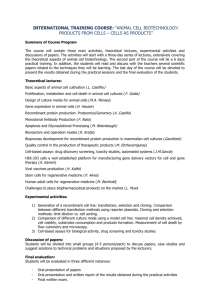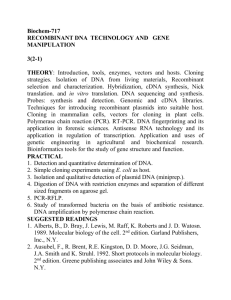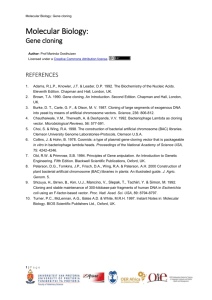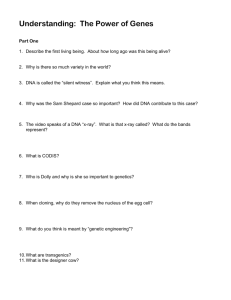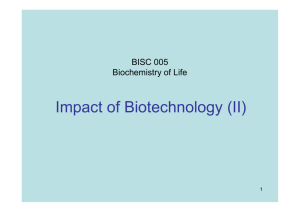Concepts
advertisement
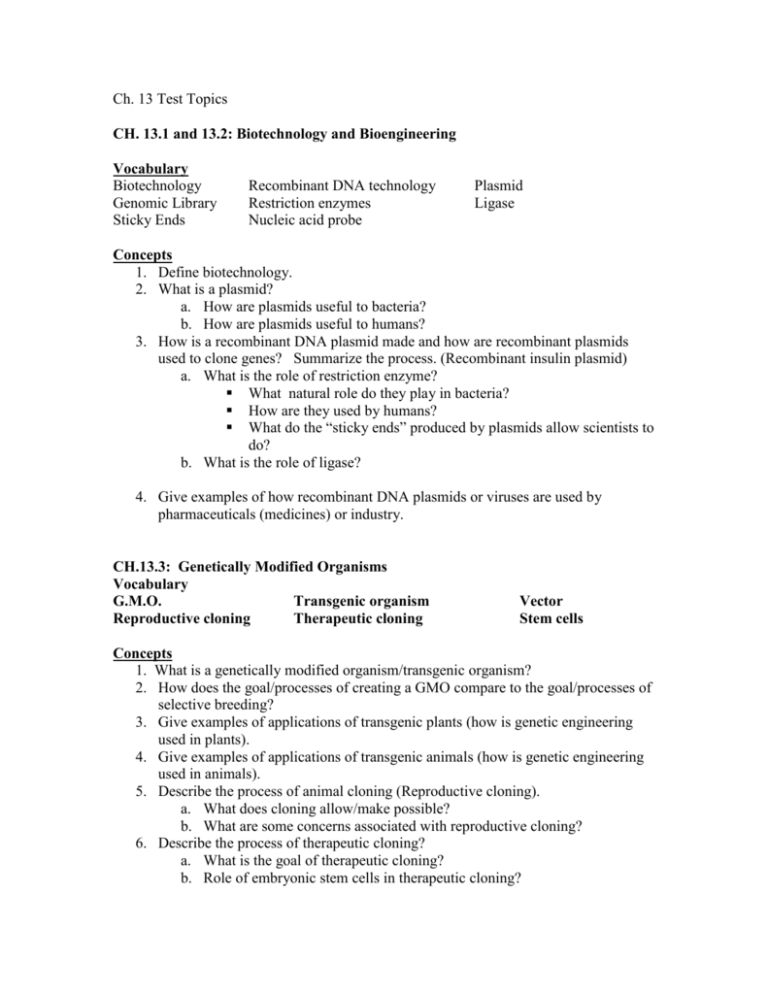
Ch. 13 Test Topics CH. 13.1 and 13.2: Biotechnology and Bioengineering Vocabulary Biotechnology Genomic Library Sticky Ends Recombinant DNA technology Restriction enzymes Nucleic acid probe Plasmid Ligase Concepts 1. Define biotechnology. 2. What is a plasmid? a. How are plasmids useful to bacteria? b. How are plasmids useful to humans? 3. How is a recombinant DNA plasmid made and how are recombinant plasmids used to clone genes? Summarize the process. (Recombinant insulin plasmid) a. What is the role of restriction enzyme? What natural role do they play in bacteria? How are they used by humans? What do the “sticky ends” produced by plasmids allow scientists to do? b. What is the role of ligase? 4. Give examples of how recombinant DNA plasmids or viruses are used by pharmaceuticals (medicines) or industry. CH.13.3: Genetically Modified Organisms Vocabulary G.M.O. Transgenic organism Reproductive cloning Therapeutic cloning Vector Stem cells Concepts 1. What is a genetically modified organism/transgenic organism? 2. How does the goal/processes of creating a GMO compare to the goal/processes of selective breeding? 3. Give examples of applications of transgenic plants (how is genetic engineering used in plants). 4. Give examples of applications of transgenic animals (how is genetic engineering used in animals). 5. Describe the process of animal cloning (Reproductive cloning). a. What does cloning allow/make possible? b. What are some concerns associated with reproductive cloning? 6. Describe the process of therapeutic cloning? a. What is the goal of therapeutic cloning? b. Role of embryonic stem cells in therapeutic cloning? c. Provide examples of therapies that we hope therapeutic cloning will achieve. d. What is the controversy surrounding therapeutic cloning? Ch. 13.4: DNA Applications Vocabulary PCR Gel electrophoresis Genetic Markers DNA fingerprint Concepts 1. What does PCR (polymerase chain reaction) do? 2. How goes gel electrophoresis work? 3. What is a DNA fingerprint? Why are DNA fingerprints unique to each person? Ch. 13.5: Gene Expression Vocabulary Operon Promoter Transcription factors Gene Expression Operator Epigenetics Repressor Concepts 1. Why does gene expression need to be regulated? (Are all genes expressed present in a cell expressed? Why or why not?) 2. How does gene regulation in prokaryotes differ from regulation in eukaryotes? a. Prokaryotic Gene Expression Describe the control mechanism of the Lac operon (or operon system in general) b. Eukaryotic Gene Expression Transcription factors and repressor 3. What is epigenetics? How can epigenetic mechanisms like methylation/de-methylation influence gene expression? Possible Open-ended Tasks Summarize and or diagram the process of making a recombinant DNA plasmid and explain the goal of the process. Give examples of biotechnology applications in agriculture, medicine, and industry. Describe the process of therapeutic cloning. What is the goal? What is the controversy? How does this process compare to reproductive cloning? Use the results from gel electrophoresis and DNA fingerprinting to identify a criminal. Explain the processes of gel electrophoresis. Explain why gene expression is regulated in cells. What can turn genes on or off?
